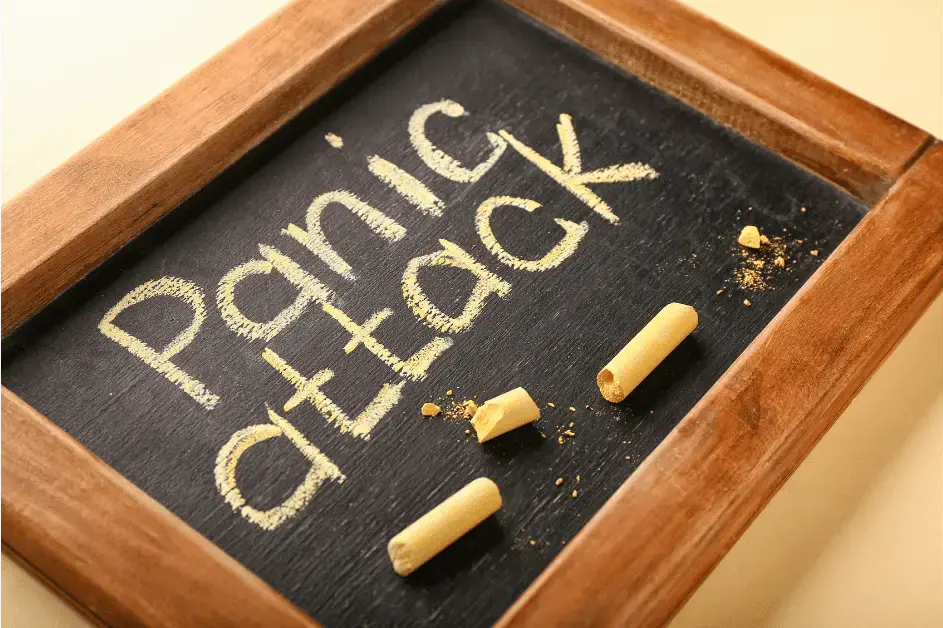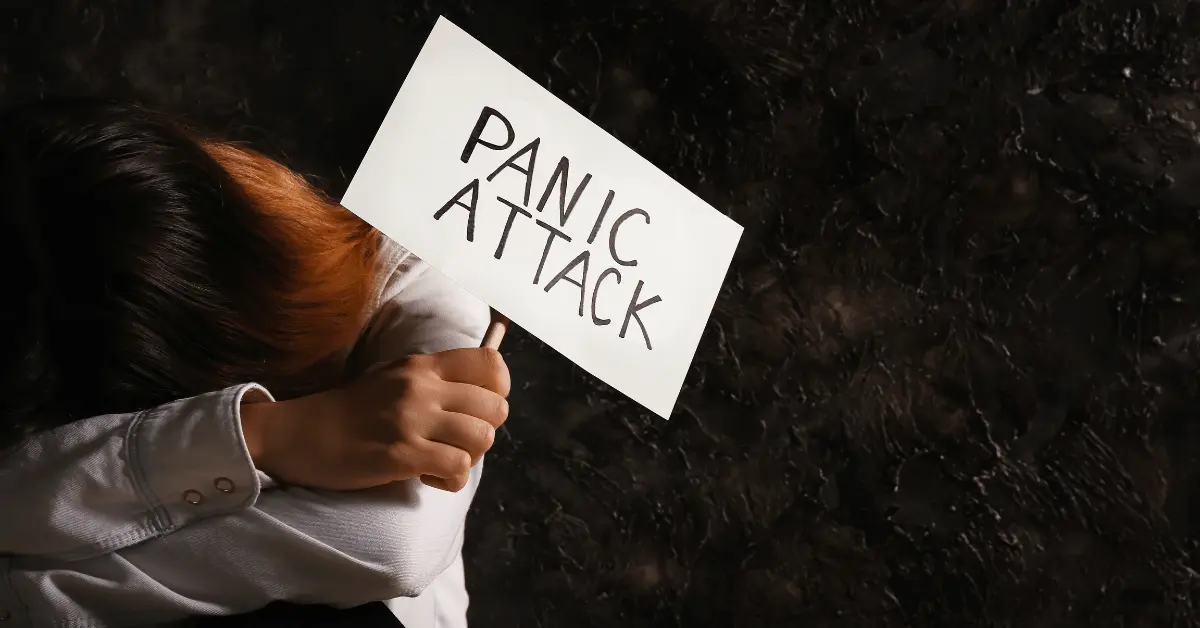Panic attacks can be debilitating and overwhelming, but they are not insurmountable. With the right strategies and support, individuals can learn to manage and overcome panic attacks effectively. In this article, we’ll explore a comprehensive guide to overcoming panic attacks, covering everything from understanding the symptoms to implementing coping strategies and seeking professional help.
Contents
- 1 I. Introduction
- 2 II. Understanding Panic Attacks
- 3 III. Deep Breathing Techniques
- 4 IV. Progressive Muscle Relaxation
- 5 V. Cognitive Behavioral Therapy (CBT)
- 6 VI. Mindfulness Meditation
- 7 VII. Lifestyle Changes
- 8 VIII. Medication and Professional Help
- 9 IX. Creating a Support System
- 10 X. Coping Strategies for Panic Attacks
- 11 XI. Overcoming Fear of Future Panic Attacks
- 12 XII. Practicing Self-Compassion
- 13 XIII. Monitoring Progress and Seeking Support
- 14 XIV. Real-Life Success Stories
- 15 XV. Conclusion
- 16 Must Read
- 17 Frequently Asked Questions (faqs)
- 17.1 1. What are panic attacks, and how do they manifest?
- 17.2 2. Are panic attacks treatable?
- 17.3 3. What are some common triggers for panic attacks?
- 17.4 4. How can deep breathing techniques help during a panic attack?
- 17.5 5. What is cognitive-behavioral therapy (CBT), and how does it help with panic attacks?
- 17.6 6. Can lifestyle changes help reduce the frequency of panic attacks?
- 17.7 7. Are there any medications available for managing panic attacks?
- 17.8 8. How important is building a support system for managing panic attacks?
- 17.9 9. What are some effective coping strategies for managing panic attacks at the moment?
- 17.10 10. Is it possible to overcome the fear of future panic attacks?
- 17.11 11. How can self-compassion play a role in managing panic attacks?
- 17.12 12. When should I consider seeking professional help for managing panic attacks?
I. Introduction
Panic attacks are sudden, intense episodes of fear and anxiety that can occur unexpectedly. They often manifest with physical symptoms such as rapid heartbeat, sweating, trembling, and shortness of breath. While panic attacks can be frightening, it’s essential to understand that they are a manageable condition with the right approach.

II. Understanding Panic Attacks
Before diving into strategies for overcoming panic attacks, it’s crucial to have a clear understanding of what they entail. Panic attacks are characterized by a sudden onset of intense fear or discomfort, often accompanied by physical symptoms such as chest pain, dizziness, and feelings of unreality. Common triggers for panic attacks include stress, traumatic events, and phobias.
III. Deep Breathing Techniques
One of the most effective ways to manage panic attacks at the moment is through deep breathing exercises. Deep breathing helps to activate the body’s relaxation response, counteracting the physiological symptoms of panic. To practice deep breathing, find a quiet space, sit or lie down comfortably, and take slow, deep breaths in through your nose and out through your mouth.
IV. Progressive Muscle Relaxation
Progressive muscle relaxation is a relaxation technique that involves tensing and then relaxing different muscle groups in the body. By systematically tensing and releasing muscle tension, individuals can reduce overall levels of anxiety and promote a sense of calm. To practice progressive muscle relaxation, start by tensing the muscles in your feet and gradually work your way up through the body, focusing on each muscle group in turn.
V. Cognitive Behavioral Therapy (CBT)
Cognitive-behavioral therapy (CBT) is a highly effective treatment for panic attacks and panic disorder. CBT focuses on identifying and challenging negative thought patterns and beliefs that contribute to panic attacks. Through techniques such as cognitive restructuring and exposure therapy, individuals can learn to change their response to anxiety-provoking situations and reduce the frequency and intensity of panic attacks.
VI. Mindfulness Meditation
Mindfulness meditation involves bringing your attention to the present moment without judgment, which can help to reduce stress and anxiety. By practicing mindfulness meditation regularly, individuals can learn to observe their thoughts and feelings without becoming overwhelmed by them. Techniques such as mindful breathing and body scan meditation can be particularly helpful for managing panic attacks.
VII. Lifestyle Changes
In addition to specific relaxation techniques and therapies, making lifestyle changes can also help to reduce the frequency and severity of panic attacks. Prioritizing healthy habits such as regular exercise, adequate sleep, and a balanced diet can support overall mental and emotional well-being. Additionally, avoiding caffeine, alcohol, and nicotine, which can exacerbate anxiety symptoms, can be beneficial.
VIII. Medication and Professional Help
For individuals with severe or persistent panic attacks, medication may be prescribed to help manage symptoms. Antidepressants, anti-anxiety medications, and beta-blockers are commonly used to treat panic disorder. However, medication should be used in conjunction with therapy and other coping strategies for the best results. It’s essential to work closely with a healthcare professional to find the right treatment approach for your individual needs.
IX. Creating a Support System
Building a support network of friends, family, and healthcare professionals is crucial for managing panic attacks. Having people you can turn to for support and understanding can make a significant difference in your recovery journey. Additionally, joining a support group or seeking out online communities for individuals with panic disorder can provide valuable resources and encouragement.
X. Coping Strategies for Panic Attacks
In addition to long-term management techniques, having coping strategies to use at the moment can be invaluable when experiencing a panic attack. Here are some effective coping strategies:
Grounding Techniques
Grounding techniques can help bring you back to the present moment and alleviate feelings of dissociation or detachment during a panic attack. Try focusing on your surroundings by naming objects in the room or touching different textures to reorient yourself.
Use Affirmations
Positive affirmations can help counteract negative thoughts and beliefs that contribute to panic attacks. Repeat calming phrases such as “I am safe,” “This will pass,” or “I have overcome panic attacks before” to reassure yourself during moments of distress.
Practice Visualization
Visualization techniques involve imagining yourself in a peaceful and safe environment, such as a serene beach or tranquil forest. Close your eyes and visualize the sights, sounds, and sensations of your chosen place to promote relaxation and reduce anxiety.
Utilize Sensory Distractions
Engaging your senses can help distract your mind from panic-inducing thoughts and sensations. Carry a small sensory kit with comforting items such as a stress ball, essential oils, or soothing music to use as distractions during panic attacks.
Focus on Breathing
Returning to deep breathing exercises can help regulate your body’s stress response and calm your nervous system during a panic attack. Take slow, deep breaths in through your nose, hold for a few seconds, and exhale slowly through your mouth to promote relaxation.
XI. Overcoming Fear of Future Panic Attacks
Fear of experiencing another panic attack can be a significant source of anxiety and may contribute to the cycle of panic and avoidance behaviors. Overcoming this fear involves challenging catastrophic thinking and developing confidence in your ability to cope with panic attacks. Here are some strategies to help:
Education and Understanding
Learning more about panic attacks and their underlying mechanisms can demystify the experience and reduce fear. Knowledge empowers you to recognize the signs of panic attacks, understand their triggers, and implement effective coping strategies.
Gradual Exposure
Gradually exposing yourself to situations or triggers that cause anxiety can help you desensitize to panic and reduce anticipatory anxiety. Start with mildly anxiety-provoking scenarios and work your way up to more challenging ones.
Cognitive Restructuring
Challenge negative thoughts and catastrophic interpretations associated with panic attacks through cognitive restructuring techniques. Replace irrational beliefs with more realistic and adaptive thoughts, such as acknowledging your ability to cope and adapt in difficult situations.
XII. Practicing Self-Compassion
Self-compassion involves treating yourself with kindness, understanding, and acceptance, especially during difficult times like panic attacks. Here are some ways to cultivate self-compassion:
Self-Care Practices
Engage in activities that nourish your mind, body, and spirit, such as taking a warm bath, practicing gentle yoga, or spending time in nature. Prioritize self-care as an essential component of your overall well-being.
Positive Self-Talk
Replace self-critical or judgmental thoughts with words of encouragement and support. Treat yourself with the same compassion and understanding you would offer to a friend facing similar challenges.
Mindful Awareness
Practice mindfulness to cultivate present-moment awareness and nonjudgmental acceptance of your thoughts and feelings. Approach your experiences with curiosity and openness, acknowledging them without attaching undue significance or criticism.
XIII. Monitoring Progress and Seeking Support
Tracking your progress in managing panic attacks can provide valuable insights into your triggers, coping strategies, and overall well-being. Keep a journal to record your panic attack frequency, severity, and associated factors, such as triggers or coping techniques.
Recognizing Warning Signs
Learn to recognize early warning signs of escalating anxiety or panic attacks, such as physical sensations, intrusive thoughts, or mood changes. By catching these signs early, you can implement preventive measures or coping strategies to mitigate their impact.
Seeking Professional Help
If you’re struggling to manage panic attacks on your own or experiencing significant distress, don’t hesitate to seek professional help. A mental health professional can provide personalized treatment, support, and guidance tailored to your unique needs and circumstances.
XIV. Real-Life Success Stories
Reading or listening to real-life success stories from individuals who have overcome panic attacks can provide inspiration, encouragement, and hope for your own recovery journey. Knowing that others have faced similar challenges and emerged stronger and more resilient can bolster your confidence and motivation.
XV. Conclusion
Overcoming panic attacks is possible with a combination of effective strategies, support, and perseverance. By implementing the techniques outlined in this article, cultivating self-compassion, and seeking professional help when needed, you can reclaim control of your life and experience greater peace, resilience, and well-being.
Must Read
- Why should you avoid drinking coffee on an empty stomach?
- 2024: 3 Powerful Benefits of Mullein Garlic Ear Oil
- 8 Surprising Benefits of Ugli Fruit You Need to Know in 2024
- New Discoveries Link Metabolites to Aging and Disease Control
- 2024’s Superfoods: Unveiling the Power of Onion and Honey
- Discover the 17 Remarkable Benefits and Facts about Buckwheat Honey in 2024
- 16 Remarkable Health Benefits and Facts about the Buddha’s Hand in 2024
- From Pre-Run Fuel to Post-Race Recovery: The Personalized Runner’s Diet Guide
- 5 Amazing Benefits of Pomegranate Green Tea That Will Transform Your Health
- 7 Unexpected Benefits of Fermented Garlic: A Remarkable Panacea
- 25 Most Fascinating Facts About the Human Body
- 9 Amazing Health Benefits of Himalayan Salt Sauna in 2024
- 9 wonderful benefits and facts about Pomelo in 2024
- Yogurt Decoded: A Guide to Choosing Healthier Options
- Understanding Depression: Causes, Symptoms, and Treatments in 2024
Frequently Asked Questions (faqs)
1. What are panic attacks, and how do they manifest?
Panic attacks are sudden episodes of intense fear and anxiety accompanied by physical symptoms such as rapid heartbeat, sweating, trembling, and shortness of breath. They can be frightening and overwhelming experiences.
2. Are panic attacks treatable?
Yes, panic attacks are treatable with the right strategies and support. Various techniques, including deep breathing, progressive muscle relaxation, cognitive-behavioral therapy (CBT), and medication, can help individuals manage and overcome panic attacks effectively.
3. What are some common triggers for panic attacks?
Common triggers for panic attacks include stress, traumatic events, phobias, and situations that provoke intense fear or anxiety. Identifying and understanding these triggers can be essential for managing panic attacks.
4. How can deep breathing techniques help during a panic attack?
Deep breathing exercises help activate the body’s relaxation response, counteracting the physiological symptoms of panic. By taking slow, deep breaths, individuals can regulate their breathing patterns and promote a sense of calm during a panic attack.
5. What is cognitive-behavioral therapy (CBT), and how does it help with panic attacks?
Cognitive-behavioral therapy (CBT) is a highly effective treatment for panic attacks and panic disorder. It focuses on identifying and challenging negative thought patterns and beliefs that contribute to panic attacks, helping individuals change their responses to anxiety-provoking situations.
6. Can lifestyle changes help reduce the frequency of panic attacks?
Yes, making lifestyle changes such as prioritizing healthy habits, including regular exercise, adequate sleep, and a balanced diet, can support overall mental and emotional well-being and help reduce the frequency and severity of panic attacks.
7. Are there any medications available for managing panic attacks?
Yes, medications such as antidepressants, anti-anxiety medications, and beta-blockers are commonly prescribed to help manage panic attacks, particularly for individuals with severe or persistent symptoms. However, medication should be used in conjunction with therapy and other coping strategies.
8. How important is building a support system for managing panic attacks?
Building a support network of friends, family, and healthcare professionals is crucial for managing panic attacks. Having people you can turn to for support and understanding can make a significant difference in your recovery journey.
9. What are some effective coping strategies for managing panic attacks at the moment?
Effective coping strategies for managing panic attacks in the moment include grounding techniques, positive affirmations, visualization, sensory distractions, and focusing on breathing.
10. Is it possible to overcome the fear of future panic attacks?
Yes, overcoming the fear of future panic attacks is possible with strategies such as education and understanding, gradual exposure to feared situations, and cognitive restructuring techniques.
11. How can self-compassion play a role in managing panic attacks?
Cultivating self-compassion involves treating oneself with kindness, understanding, and acceptance, especially during difficult times like panic attacks. Engaging in self-care practices, practicing positive self-talk, and cultivating mindful awareness can help foster self-compassion.
12. When should I consider seeking professional help for managing panic attacks?
If you’re struggling to manage panic attacks on your own or experiencing significant distress, it’s essential to seek professional help. A mental health professional can provide personalized treatment, support, and guidance tailored to your unique needs and circumstances.

